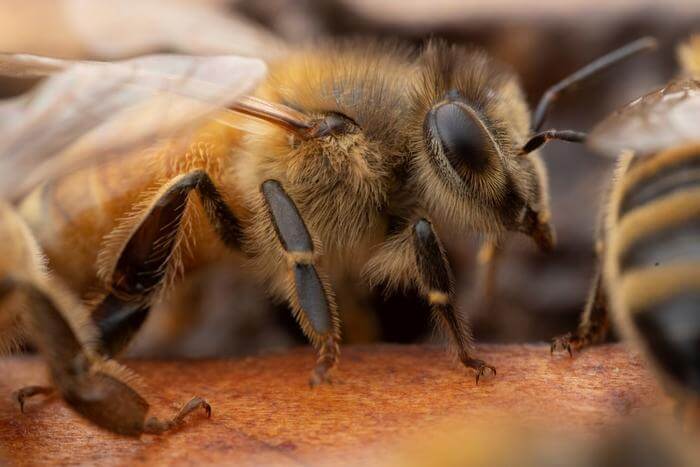In a new study published in the journal eLife, researchers shed light on the remarkable decision-making abilities of honey bees, showcasing how millions of years of evolution have finely tuned these insects to make rapid and accurate choices while minimizing risks. This newfound understanding not only deepens our knowledge of insect brains but also offers valuable insights into the evolution of our own cognitive processes and the design of more advanced robots.
Led by Professor Andrew Barron from Macquarie University in Sydney, along with Dr HaDi MaBouDi, Neville Dearden, and Professor James Marshall from the University of Sheffield, the study presents a comprehensive model of decision-making in bees. By outlining the neural pathways that enable swift decision-making, the researchers provide a framework for unraveling the mysteries of these fascinating creatures.
“Decision-making is at the core of cognition,” explains Professor Barron. “It results from evaluating possible outcomes, and animals face countless decisions throughout their lives. Despite possessing brains smaller than sesame seeds, honey bees can make decisions faster and more accurately than humans. To replicate a bee’s abilities, a robot would require the computational power of a supercomputer.”
Professor Barron goes on to highlight the limitations of current autonomous robots, which heavily rely on remote computing support. Drones, for example, lack independent decision-making capabilities and must maintain wireless communication with a data center. This approach, he argues, hampers the prospect of drones exploring distant locations like Mars without external aid, unlike NASA’s rovers that have traveled a mere 75 kilometers over several years.
For honey bees, swift and efficient decision-making is crucial to their survival. Balancing the tasks of finding nectar and safeguarding the hive from predators, bees constantly face decisions regarding which flowers are likely to yield food. While airborne, they are vulnerable to aerial attacks, and once they land to feed, they become susceptible to predators, some of which camouflage themselves as flowers.
The researchers trained 20 bees to recognize five differently colored “flower disks.” Blue flowers consistently contained sugar syrup, green flowers always contained quinine (imparting a bitter taste to bees), and other colors occasionally contained glucose.
“We then introduced each bee to a ‘garden’ where the ‘flowers’ only contained distilled water. We recorded over 40 hours of video, meticulously tracking the bees’ flight paths and measuring the time it took them to make decisions,” explains Dr MaBouDi.
Dr MaBouDi further elaborates on their findings: “If the bees were confident that a flower held food, they swiftly decided to land on it, taking an average of 0.6 seconds. Conversely, if they were confident that a flower did not contain food, they made the decision just as quickly.”
However, when bees were uncertain about a flower’s potential yield, they took significantly longer to decide, averaging 1.4 seconds. The time spent reflected the probability of the flower containing food.
Using these observations, the research team constructed a computer model that emulated the decision-making process of bees, mirroring the structural layout of a bee brain.
“Our study demonstrates complex autonomous decision-making with minimal neural circuitry,” asserts Professor Marshall. “Now that we understand how bees make such intelligent choices, we are investigating how they excel at rapidly gathering and analyzing information. We suspect that bees leverage their flight movements to enhance their visual systems, enabling them to detect the best flowers more effectively.”
Insect behavior, including that of seemingly “simple” animals like bees, offers valuable insights for AI researchers. Through millions of years of evolution, these creatures have developed highly efficient brains with remarkably low power requirements. Professor Marshall, who co-founded Opteran, a company dedicated to reverse-engineering insect brain algorithms for autonomous machine movement, believes that the future of AI in industry will be deeply inspired by biological systems.
By unraveling the secrets of honey bee decision-making, researchers pave the way for breakthroughs in robotics and AI. As technology draws inspiration from nature’s intricate designs, we inch closer to developing machines capable of autonomous decision-making, mirroring the remarkable abilities of these small but mighty insects.


